I’m giving a talk this week in Amsterdam about building a culture of innovation and I stumbled across a recent innovation report from Capgemini that I found interesting.
Capgemini reports that 87% of companies now have a space dedicated to innovation (a 27% increase in innovation centers versus last year). But only 17% of companies say that innovation is taking place across the organization (beyond those innovation centers).
In other words, investing in innovation centers isn’t actually making those organizations more innovative. One of the biggest barriers to innovation that Capgemini identified is culture. Most organizations lack a culture of innovation. 75% of senior executives believe their organizations have a culture of innovation, but only 37% of employees feel the same.
Whether at the macro-level of an innovation center or the micro-level of a department brainstorm, innovation is often treated as an isolated siloed activity, separate from the day-to-day. Innovation centers and brainstorming sessions are then symbolic only, not actually driving innovation.
As John Rethans from Apigee observed in the study:
“I’ve seen a number of places where the innovation center is literally a glass-walled aquarium on a busy street in which 30 or so hipsters are on display, working on MacBooks at standing desks. Meanwhile, the rest of the company toils away in the surrounding towers, working in cubicles with five-pound, 10-year-old laptops. This type of center devolves into innovation as spectacle instead of innovation as strategy.”
Here’s how Capgemini CTO Larry Cohen summarized the findings of the study:
“Organizations need to accept that they cannot just open innovation centers and expect an overnight transformation in their creative output. To achieve and sustain real change, firms need to create a culture in which all employees are encouraged, through financial and non-financial incentives, to experiment and push ideas to market.
“Innovation units can play a large role in this process, partnering with individual teams to develop ‘out of the box’ ideas and provide a link to the partner and vendor ecosystem. However, a sense of innovation and creativity needs to be instilled company-wide if it is to be truly successful.”
Here are a few other cartoons I’ve drawn on this topic over the years:
“After the Brainstorm” June 2010
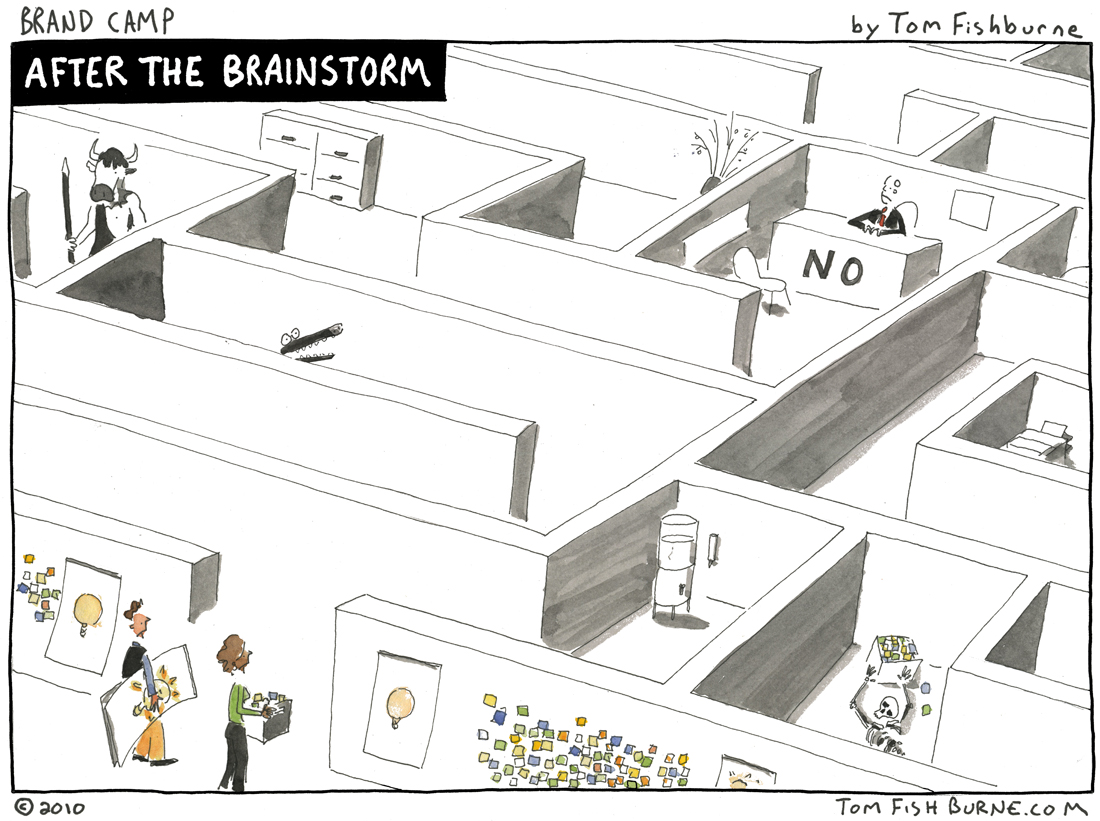
“Innovation Catch-22” November 2014
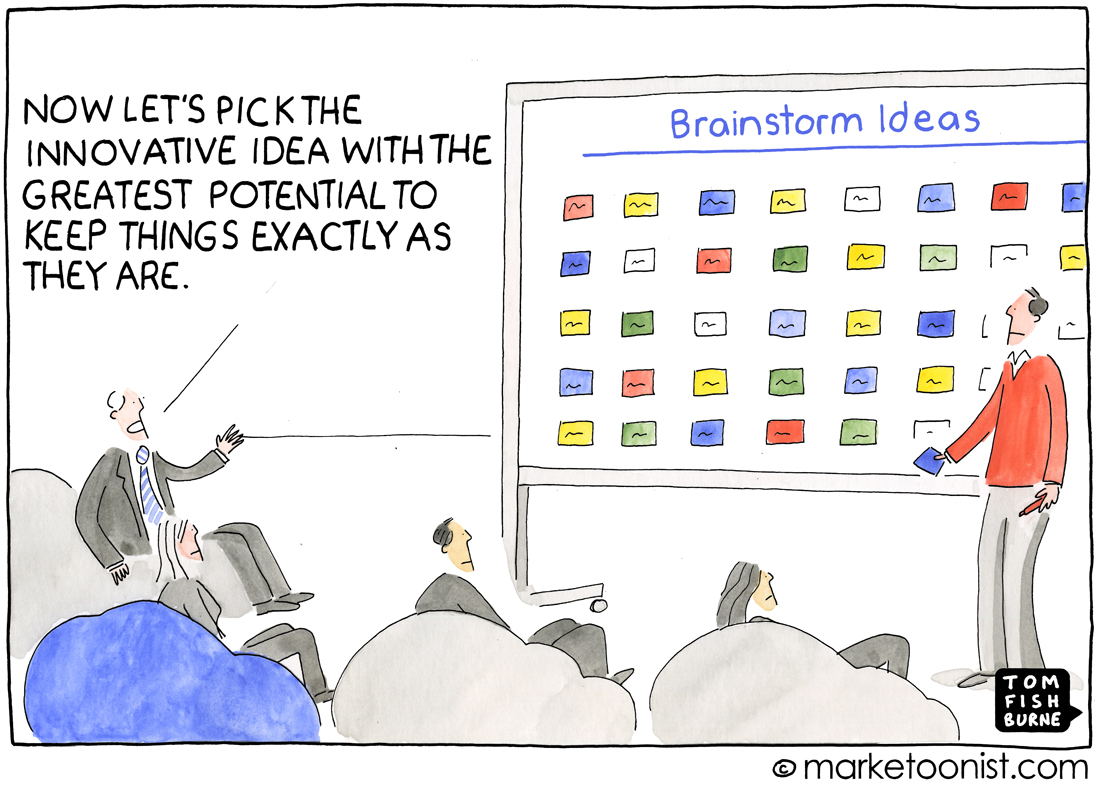
“Garden of Innovation” October 2007
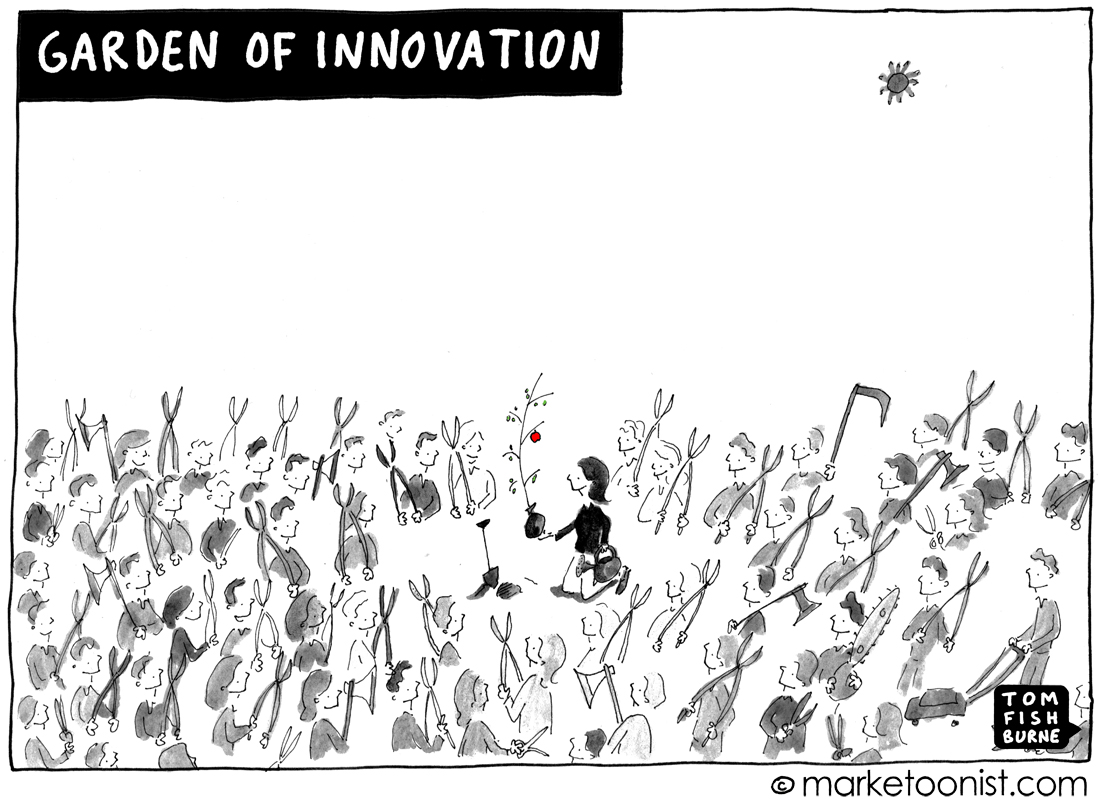
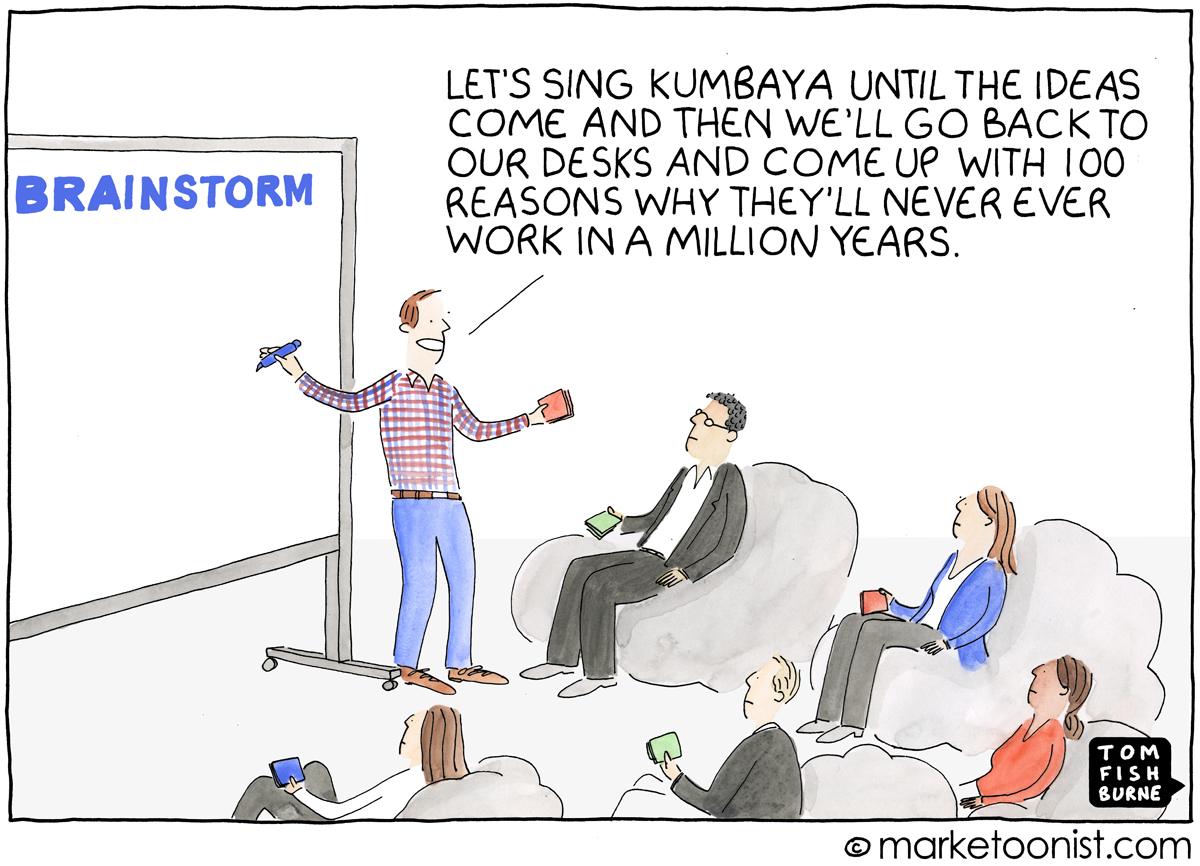

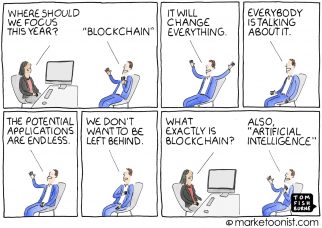

Laurie Tema-Lyn says
Tom;
Great post and I agree that innovation can only flourish in a climate / culture that supports it! Many years ago I conducted a study though my former company (IdeaScope Associates) in collaboration with Babson College Center for Entrepreneurial Management and as I recall the findings were similar then. There were companies at the time that really did have centers for innovation excellence and they were quite successful at it, and others just paid lipservice to it. In those firms the most well run innovation sessions would end up going nowhere because they did not have the mechanisms in place (strategic committment, mission, vision, resources, structure, systems, etc. and CULTURE) to support innovation.
Eileen O'Hara Bruen says
Good one – it’s such a tricky topic! Often very hard for the teams in place, if managing daily business needs, to feel empowered to apply and then act on an innovative mindset. And it takes a special skill set to effectively pull through the organization consistently.
Michael Kyritsis says
“innovation can only flourish in a climate / culture that supports it” – funding is an important element of “climate”. A business unit is unlikely to fund an innovation that has a payback period of more than a year because it’s going to have an adverse affect on their results.
Anshul says
Innovation is a frequently misunderstood and consequently misused word /phenomenon.
As readers have pointed out, culture is a crucial ingredient for innovation to happen.
Putting in an innovation lab like structure, without creating a mindset of risk taking, tolerance of failure, flexibility, non silo working, uncertainty – is like putting the cart before the horse.
Successful innovation thrives in an environment of this type, but putting up with all of these is anti to the corporate DNA.
A few smart companies have realised their shortcomings and
hence bought equity from innovative startups in their domain, while asking them not to integrate with their traditional ways of working.
That seems to be one feasible work around for the innovation problem
Jaffo says
If someone is actually working for someone else they don’t have a brain to storm with.
Milos says
Tom is, as always, right on the money. I would like to emphasize here role of employees – such a strong commitment to not changing anything. Whit each year that passes in the same company an employee is less open for any change. Degree of compaints nad critique raises, but wiligness to accept changes goes down.
It is pretty much the same with management, except they are more likely than other employees to advocate for change, while they will actually also do as little as they can to actually achieve the change.
This is not something universal of course, but in majority of copanies this is the case. Sad but true.